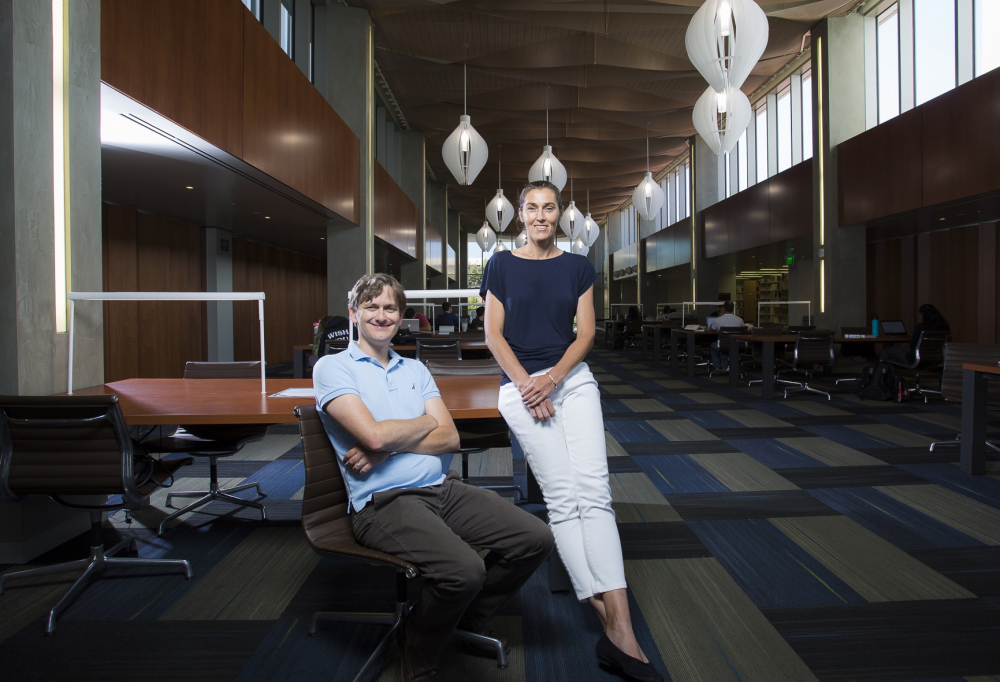Quantum Foundry Lands at UCSB
Leading-Edge Physics Center Funded by National Science Foundation

Quantum physics looks at very tiny atomic-scale particles, which move and act in a very different way than Isaac Newton’s laws of physics dictate. They’re so fragile that simply examining them – by causing other atoms to interact with them in an electron microscope, for instance — changes their very nature. But scientists believe they hold the key to the next leap in computing power, and UCSB just won the contest to be the nation’s first Quantum Foundry.
Already, Dr. John Martinis of UCSB’s Physics Department is leading an impenetrably complicated project off-campus in a Goleta Google facility to achieve super-high computing speeds. He’s one of the leaders among dozens of researchers at UCSB, all of whom formed a winning combination of brainpower and cutting-edge facilities for the highly competitive National Science Foundation’s $25 million grant. About 23 faculty members are involved in the new Foundry from the materials, physics, chemistry, mechanical engineering, and computer science departments, led by materials professor Stephen Wilson and physics professor Ania Bleszynski Jayich. The collaborative nature of UCSB’s science faculties and labs was another reason the NSF chose UCSB, Bleszynski Jayich said.
“Our culture is so interdisciplinary and so collaborative,” Bleszynski Jayich said. “We all work together, as do other universities, but UCSB does it better than anywhere else.” The Quantum Foundry’s goal is to develop new systems to “gain control over the materials,” she explained. “Our shared facilities in multiple disciplines are state of the art. Super-clean systems can control all the interactions with the environment, including other atoms bouncing off of them. They are so delicate; they are easily destroyed by any interaction.”
“Quanta” refers to the packets of energy contained in various materials, and the divergence with classical physics in the non-intuitive way they act is often explained through the analogy of a cat in a box. First thought up by Austrian physicist Erwin Schrödinger in 1935 as an argument in the heated physics debate going on at the time, Schrödinger’s cat has come to represent the paradox of the particles’ properties: A cat in a box is alive or dead; as long as no one looks in the box, it’s both. That the cat, or atoms, can be in two states at one time is called “superposition” in this super-miniature field of study — “Dead or alive, zeroes or ones,” Bleszynski Jayich explained. In a quantum computer, these are partly a zero and a one at the same time. “Entanglement” is another phenomenon in which entangled particles that are separated, even continents away, have states that remain tied together, depending on how they were initially prepared, she said to her dumbfounded listener in a phone conversation.
Taming the strange physics of these particles is the main focus of the Quantum Foundry. As its researchers work to produce and measure the novel atomic structures, they will also be developing with industrial partners the new tools needed to form and work with the quirky particles that could be alive, or dead, or both, in their laboratories. Project collaborators are a list of industry heavy-hitters, including Microsoft (its Station Q quantum computing group is already on campus), Google, IBM, Hewlett Packard Enterprises, HRL (formerly Hughes Research Labs), Northrup Grumman, Bruker, SomaLogic, NVision Imaging Technologies, and Angstrom Science.
(NB: All errors in the description of the science underlying this fascinating project are the writer’s, not the professor’s.)



